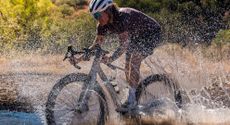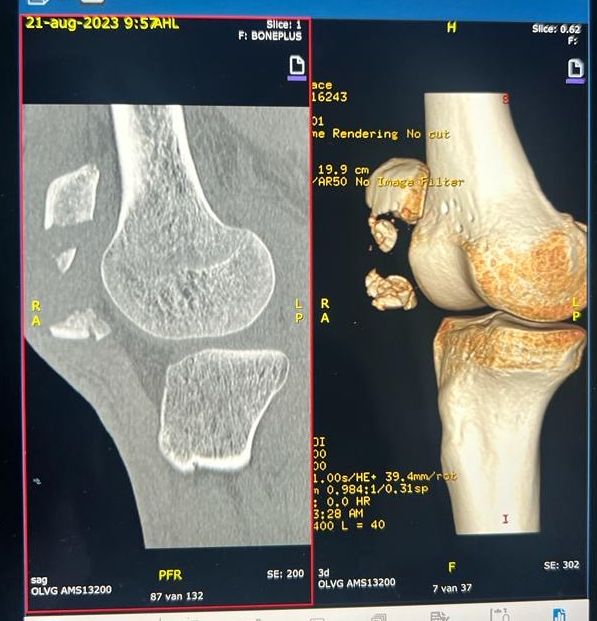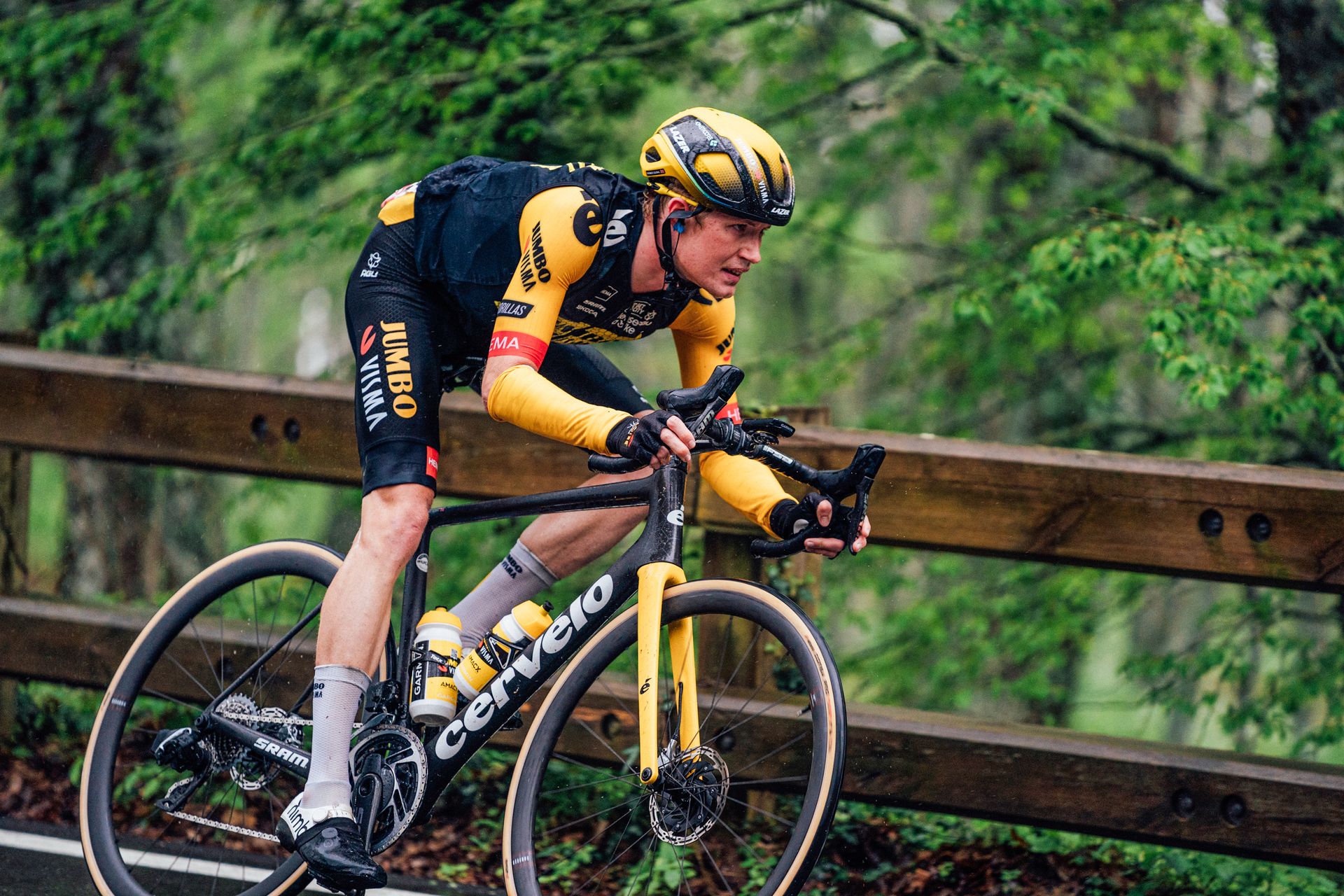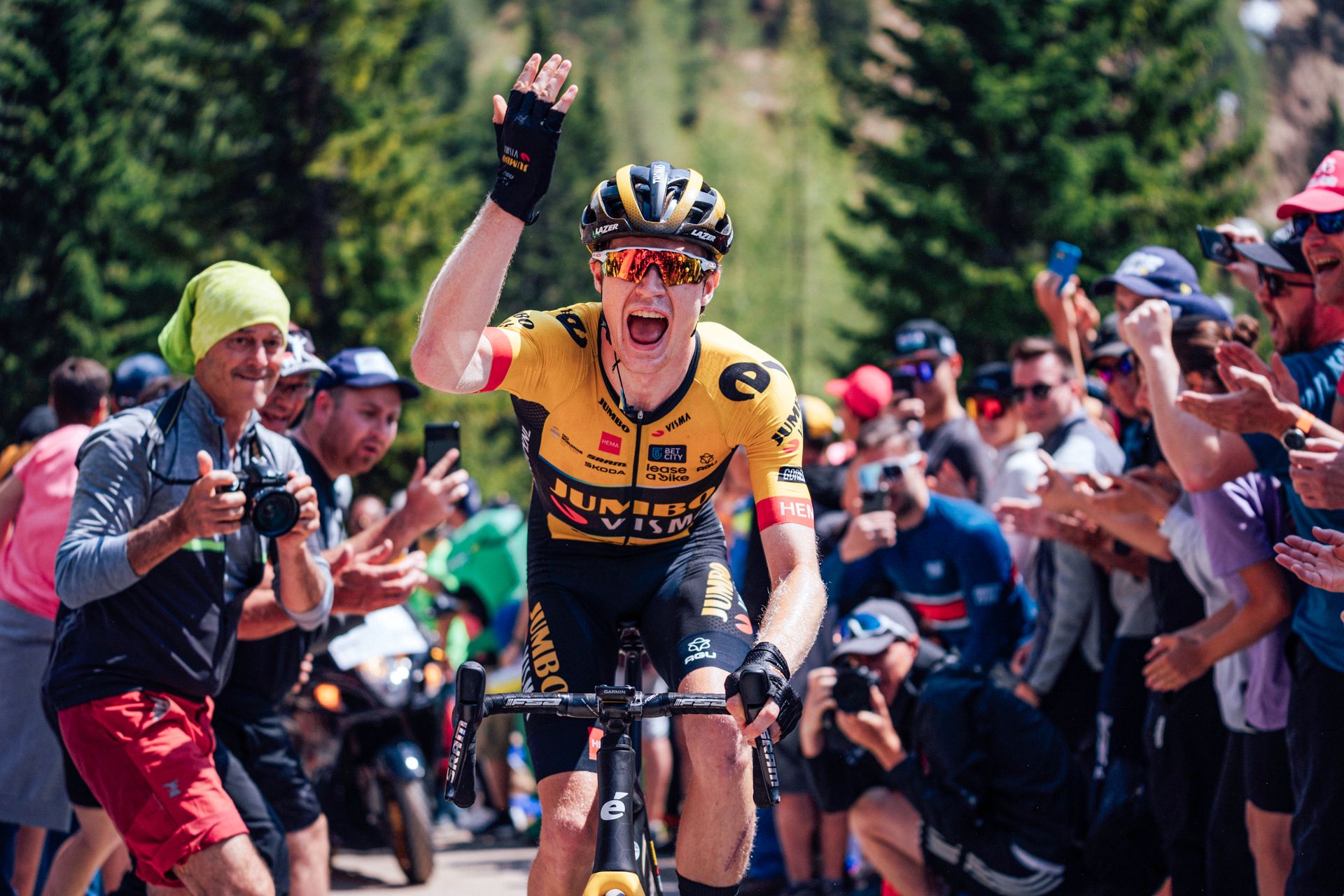'My knee was broken into too many pieces to count': The comeback to cap them all
A bone-shattering accident in his first year as a pro left Tom Gloag fighting to save his career – but save it he did


“Two weeks after the accident, I took the cast off for the first time to shower, looked down at my knee and fainted,” Tom Gloag pauses to let out an embarrassed laugh. “I’d never fainted before, but it was the sight of how much muscle I’d lost. I was out for about a minute.” In August 2023, Gloag’s right kneecap had shattered into dozens of tiny fragments when he collided with a car during training. It was only once his knee had been surgically rebuilt that the rehab challenge really hit him. “I thought the main issue was going to be regaining the range of motion, but actually it was rebuilding strength,” he tells me by phone from his home in Girona. “The muscle had atrophied so badly that even months later, when getting up in the night, I’d have to grab my leg to bend it – my right quad was that weak.”
Before the accident, the Visma-Lease a Bike rider had been riding high, having begun 2023, his neo-pro season, by almost winning a mountain stage of the Volta a Valenciana. He followed this up in May by helping Primož Roglič win the Giro d’Italia. Having been drafted in at the 11th hour, his maiden Grand Tour left the Londoner, then 21, feeling wipedout. “I was in a massive box,” he recalls. “I’d never been so tired in all my life, and I struggled to recover from the load. The level of fatigue was a massive shock to the system.” He was given an extended break from racing and did not return until the Clásica San Sebastián at the end of July. Three weeks later, on 17 August, the collision with a car in Girona ended his season in an instant – and threatened his career.
Like his race season, Gloag’s kneecap was in bits
“It was a bit of a nothing crash,” he explains. “I was in a contraflow bike lane riding at 20kph when a car turned towards me. I hit my right leg on the bonnet in such a way that all the impact went to the knee.” Immediately, he knew. “I was on the floor and could see I had completely f***ed my kneecap,” he recalls. “It was broken into too many pieces to count.” He was taken to hospital where doctors didn’t mince their words. “The official diagnosis was: ‘Tom, you’re basically f***ed’,” the 23-year-old paraphrases bluntly, “but there was always a bit of a disconnect between how I and the medical team thought I’d be. The full severity was never discussed with me, and that wasn’t necessarily a bad thing because they were saying to the team that I might never be able to ride again.”
Half of the distal pole of his right kneecap was shattered, meaning his leg had to be immobilised in a straight cast for six weeks to allow the bone to heal. “I had complete knee reconstruction surgery where they put a fair few pieces of metal into the kneecap to help join the gap between the top and the bottom half,” he says. “Luckily when you’re fit, healthy and [when] young the body heals remarkably well.” It was forced inactivity caused by the cast, rather than the broken bone, that proved more difficult to recover from. “After 48 hours of no movement, the quads start to atrophy,” says Gloag, explaining how unused muscle essentially stops functioning. After two weeks, the cast was temporarily removed to enable him to take that shower. “It was one of the strangest moments of my life,” he says. There followed another four weeks in the cast and further wasting of the leg. “My muscles had atrophied so much that it was basically just bone at that point.”
Rising to the challenge
Gloag got his head down and confounded his gloomy prognosis
The young rider had no guarantee he would return to riding a bike, let alone top-level racing. “You’re in a wheelchair for six weeks, no one can tell you if you’ll ride pain-free again, and that level of bad news breeds a different confidence in you,” he says. He had gone from riding the crest of a wave, with “everyone telling me how great I was”, to not being able to move his leg. “When everyone’s telling you you’re f***ed and they can’t be certain that you’ll ride a bike at any level again, you need to build confidence in yourself because no one else will. It was the first time I’ve ever had to really overcome real adversity.”
After acknowledging that many people go through worse “real-life suffering”, he returns to his theme. “This was the first time I had a problem in front of me where no one was telling me the clear way forward. I had to figure it out myself,” he says. “It was daunting but I had time and good expertise in abundance, a fantastic team of physios and coaches around me, and that helped me to grasp the problem and build a way out of it. I can honestly say I’m now more confident as a rider than when I was before the crash.”
Resistance is useful
From October 2023, Gloag’s rehab was focused on twice-weekly strength sessions in the gym, revolving around squats. “I could use my hamstring to lob my leg around, but I had to train my knee how to bend itself again,” he says. “I’d never done any strength and core training before. It was fun and I was convinced it would make me better.” He didn’t get back on a bike until December. “In reality, getting fit on the bike is not massively complicated, so the main thing was that I got back to it,” he says. Gradually he increased his volume from 10 to 15 hours a week, before surgery in March 2024 to remove the metal in his knee. How are his legs today? “In terms of pure muscle, my right hamstring has had to compensate for the lack of a quad, and I’ve also got bigger calves,” he says, “but disparity-wise, my left-right pedal balance on the bike is 52-48, and that was the goal all along.”
Get The Leadout Newsletter
The latest race content, interviews, features, reviews and expert buying guides, direct to your inbox!
Success then setback
On 25 July, Gloag lined up at the Czech Tour, his much-longed-for return to racing, 362 days since his last appearance in a peloton. “I wasn’t nervous because various metrics were telling me that, from a physical standpoint, I was as good as I had ever been, so I was really confident.” He was right to be: he won stage three on a tough summit finish. “It wasn’t the best field,” he says, neglecting to mention the nine Tour de France teams on the start list, “but it was a moment of, ‘Wow, I’m here. I have the level’. I had tears in my eyes because finally I was feeling like a bike racer again.” There was a bitter twist at the end of August when Gloag fractured his elbow in another training ride crash, one year on from the kneecap smash. Even so, ‘the politest man in cycling’ – as one headline labelled him – refuses to be downbeat about his 2024 season being cut short after only 10 days of racing. “I could have come back for October, but the team were like, ‘Just take a holiday, mate.’” Next season, though, is a big one. “I’m very confident I can be competitive at a pro level,” he states. “I’ve got a point to prove.”
Bosses' view: His potential is huge
The thrill of the WorldTour soon gave way to the grind of recovery
Richard Plugge is general manager of Visma-Lease a Bike: “Tom is such a nice guy that I really hope he will come back at the highest level again. As he has shown by winning in his first race back, he’s a very big talent and his potential is huge. That’s why we have him in the team. We are working really hard with him and hope that his bad luck is behind him, to find out what he can achieve as we move forward.”
Pete Kennaugh was Tom Gloag’s sports director during his two seasons with Trinity Racing, 2021-22: “Tom could have turned pro earlier but sensibly took an extra year to make sure he was ready. What stands out about him is his physical capacity. He had a few bad crashes while at Trinity, as he has in his first few years as a pro, but in between he’s had amazing days of really high performance. Maintaining that level has been a struggle, but I’m sure all the pieces of the jigsaw will click into place.”
This article was originally published in Cycling Weekly magazine. Subscribe now and never miss an issue.

Thank you for reading 20 articles this month* Join now for unlimited access
Enjoy your first month for just £1 / $1 / €1
*Read 5 free articles per month without a subscription

Join now for unlimited access
Try first month for just £1 / $1 / €1
A freelance sports journalist and podcaster, you'll mostly find Chris's byline attached to news scoops, profile interviews and long reads across a variety of different publications. He has been writing regularly for Cycling Weekly since 2013. In 2024 he released a seven-part podcast documentary, Ghost in the Machine, about motor doping in cycling.
Previously a ski, hiking and cycling guide in the Canadian Rockies and Spanish Pyrenees, he almost certainly holds the record for the most number of interviews conducted from snowy mountains. He lives in Valencia, Spain.
You must confirm your public display name before commenting
Please logout and then login again, you will then be prompted to enter your display name.
-
 Anne-Marije Rook's 2024 Gear of the Year: from the best brakes on the market to great earbuds and a statement t-shirt
Anne-Marije Rook's 2024 Gear of the Year: from the best brakes on the market to great earbuds and a statement t-shirtIn 2024, I fell back in love with road riding and witnessed women’s sports make history time and again
By Anne-Marije Rook Published
-
 'Anything can happen': Our men's rider of the year Joe Blackmore looks back on a stellar 2024 and weighs up his future
'Anything can happen': Our men's rider of the year Joe Blackmore looks back on a stellar 2024 and weighs up his futureThe Londoner tells Cycling Weekly about his hopes for next season, his sporting heroes, and how he plans to walk the tightrope between on road and off
By James Shrubsall Published


